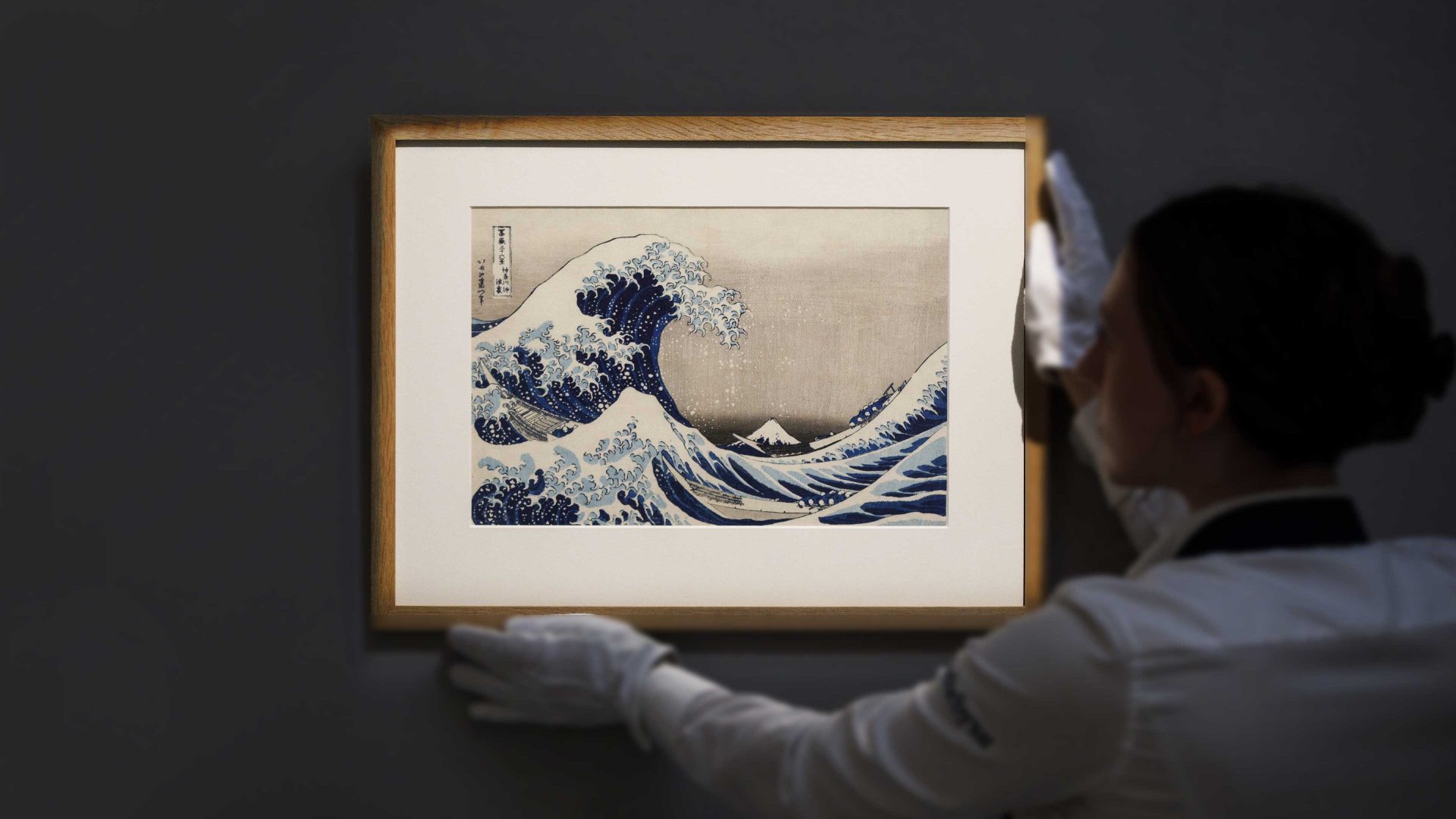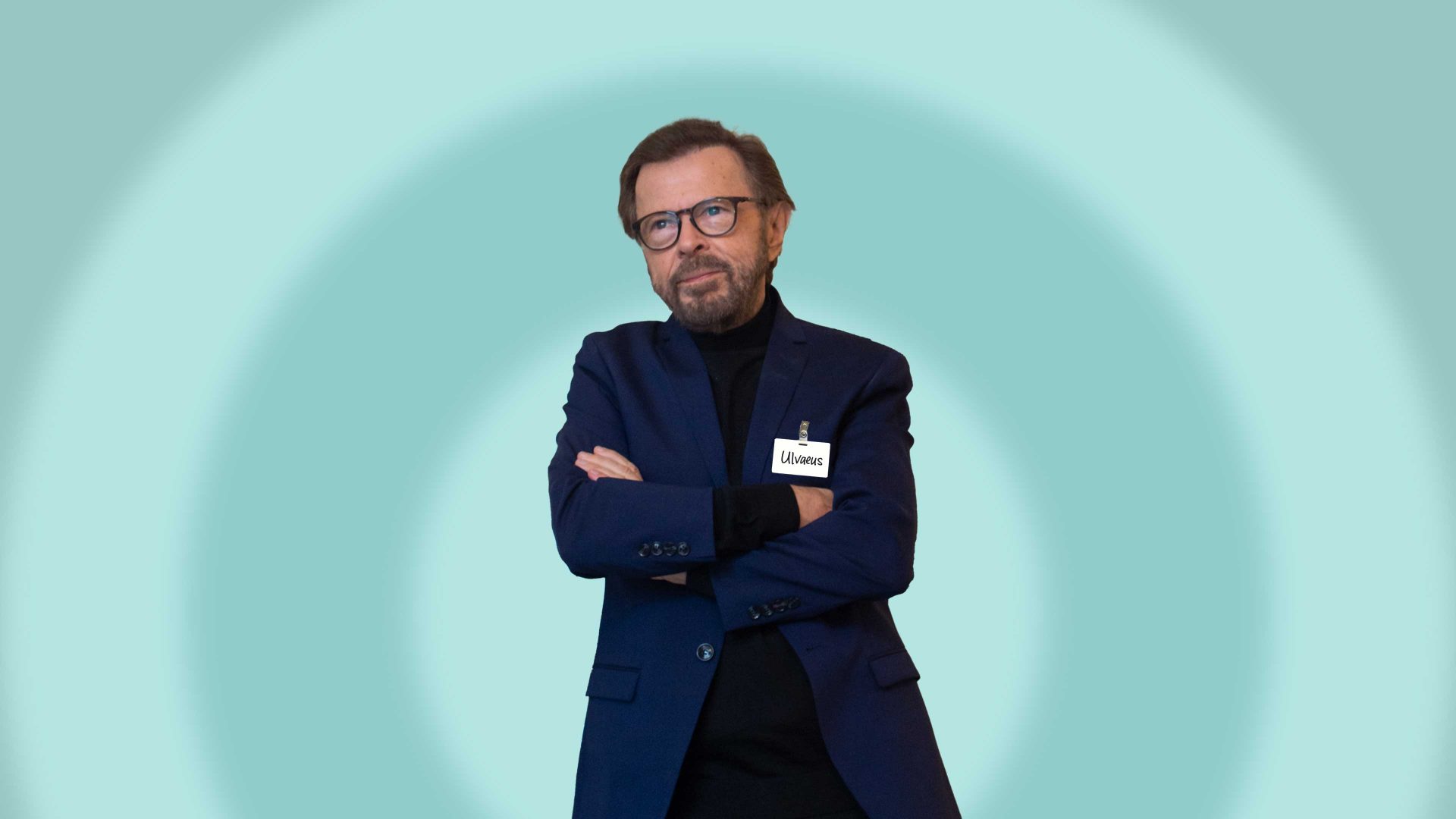Unsurprisingly, in my house we’re preoccupied by cultural syncretism even when it comes to putting up a picture. We’ve been in the new place for over a year now, but the vexed issue of the Hokusai prints has preoccupied us to this extent: they still haven’t been hung, but instead are lined up along the skirting board in our bedroom: six of the original Thirty-Six Views of Mount Fuji, by the great Japanese artist, including three of the most famous images: Fine Wind, Clear Morning, in which the sacred mountain appears as a pure cone, illumined red by the dawn; Kajikazawa in Kai Province, depicting a fisherman on a rocky outcrop, casting into the anfractuous waters of the Fuji River, while the peak rises from the misty distance, an ethereal triangle congruent with the lines of his net.
And, of course, The Great Wave off Kanagawa, in which three oshiokuri-bune – fast rowing boats – are shown in Edo Bay en route to pick up a cargo of fish for sale in the market, while in the far distance, Fuji rises above the tumultuous sea. The eponymous wave itself is often thought to be a tsunami – but in fact, allowing for the fact that Hokusai compressed the perspective so it appears to loom still more threateningly over the boats, it’s not untypical for the seas in this region.
Still, how was I to know this, growing up in the leafy suburbia of 1960s England. The Wave terrified me – and haunted my dreams, forever curling with its sickening leading edge of dentilated foam, over everything; for the imminent fate of the boats’ rowers quite clearly is an allegory of humankind’s, for ever poised on the brink of apocalypse.
Yes: in my tormented little mind, the Wave became mixed up – via Japan – with nuclear Armageddon, while the dominant colour of the prints, Prussian blue, seemed to me at once sinisterly gleaming, and beautiful, in an unearthly way. The pigment had swept through Japanese culture like, um, a great wave; one which, together with the perspectival techniques introduced by the Dutch in the 17th century, completely transformed artists’ approach to their subject matter, together with its execution.
There was this aesthetic fascination – one felt by many who have gazed, even unthinkingly, on The Great Wave (arguably, especially unthinkingly, since the image is hypnotic) – and there was the printing process, which in Ukiyo-e – Japanese woodblock printing), involves the eradication of the original source image in the process of making the template.
Not that I grasped any of this – what I did grasp was that the portfolio of Hokusai prints had been given to my mother by a former lover, whose New York-based company had printed them in the 1940s as one of the first mass examples of high-quality four-colour printing to be widely available.
So, the elegiac, episodic character of my mother’s own life – an emigrant from the States, who’d crossed an ocean, leaving behind an entire previous existence, including career and family – also became bound up with these Japanese boatmen, on the point of either being engulfed by the wave, or escaping it.
Anyway, with such resonances you can imagine there’s been considerable pondering over how the six prints should be framed and where hung. The first task has been completed – and yet, the pictures loiter by the bedroom wall. The problem is our Edwardian house, with its bare polished floorboards, pale-painted woodwork, and still largely void walls. The late Arts & Crafts design is itself strongly influenced by Japanese culture, which swept the Europe of the late 19th and early 20th century in a sort of reverse wave, or splashback, from the opening of the country to the west that ended the Sakoku period in 1853. Hokusai was influenced by the west – the west returned the compliment by being invigorated by Japanese printmaking: impressionism, post-impressionism, fauvism and art nouveau all owe their inception to this fruitful synergy.
West-to-east, east-to-west; right-to-left and left-to-right: so it is that currents of cultural change course, while we remain paralysed by an imperfectly assimilated aesthetic of Japanese simplicity and purity, becoming unable to ply hammer, panel pins and picture hooks. The paradox here being that as a child, in common with everyone else in the west, I read The Great Wave from left-to-right (west-to-east), whereas it’s intended to be parsed the opposite way, as Japanese text is.
When westerners send the wave emoji from their iPhone, they may be indicating that while danger is present, they’re valiantly paddling their way out from under it – but the eastern user of Apple products expresses a more worrying sentiment: the danger is right ahead, and quite unavoidable.



